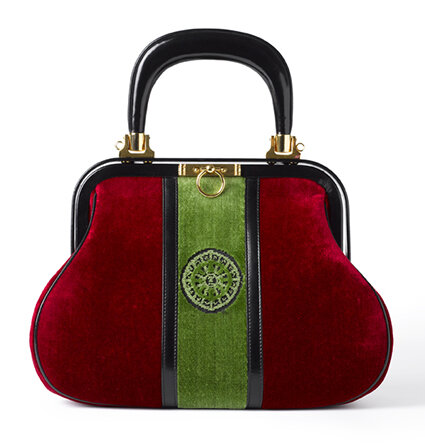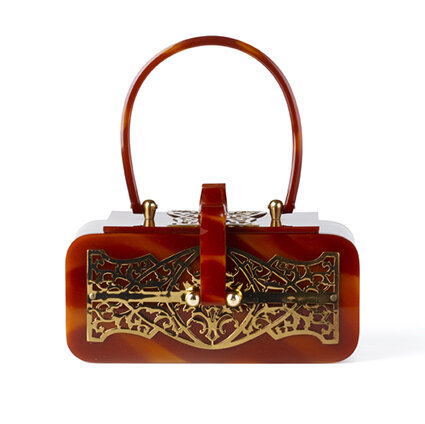BAG TO THE FUTURE
Picture this. You’re in Seoul, South Korea, strolling down Garosu-gil in Sinsadong, Gangnam, the beautiful, bohemian shopping street that’s lined with ancient Ginkgo trees. Suddenly, a surreal giant handbag-shaped building looms into view. But you’re not dreaming. This is the extraordinary ‘BagStage’. Reminiscent of a giant-sized tote bag, it houses the amazing, one-of-a-kind Simone Handbag Museum.
BagStage. A bird’s-eye view
The fantastical Simone Handbag Museum was founded in 2012. Its curator has collected and displayed 300 handbags that are highly valuable in recording the history of fashion. Global media including the New York Times, Vanity Fair, CNN, The Wall Street Journal and the Financial Times have trailblazed it as one of the must-see destinations in Seoul.
The Museum’s philosophy is that a handbag is a contemporary objet d´art that reflects the past and shows a unique relationship between goods and collection. Instead of just incarnating ‘the past’ and following ‘it bag’ trends, the Museum acts as an evolutionary space that consistently records the lives women have lived and the lives women want to live, focusing on how handbags have contributed to establishing a woman’s identity.
Roberta di Camerino silk, velvet, leather and metal handbag. Italian, 1940’s. Designer Giuliana Coen Camerino founded her Venetian fashion house in 1945. Its name combines her husband’s surname with the title of the 1935 Hollywood film Roberta, starring Fred Astaire and Ginger Rogers. The house became famous for its innovative use of rich fabrics traditionally associated with dressmaking. Grace Kelly and Elizabeth Taylor were among a number of celebrity clients.
At the heart of the BagStage building, there is a treasure trove of bags to discover at the Simone Handbag Museum, all stunningly presented. They’re divided into a Modern Gallery and Historical Gallery. The Modern Gallery is built with an all-white interior designed to create ‘an atmosphere of both a storage and a laboratory’. The Historical Gallery has achieved ‘an atmosphere of a Victorian Age.’
This signature design Wilardy box bag with its decorative panels of Lucite and metals exemplifies the highly feminine fashions of the American 1950s.
Artifacts in the collection range from a historic sweetmeat purse to covetable 21st century designer brands. The Museum is rightly proud of a treasure from Napoleonic times, a gold change purse made by Boucheron, crafted especially for royals and aristocrats. Less glamorous but a perfect piece of social history is a gas-mask box the British government distributed in the 2nd World War.
Precious and ingenious gold ‘drawstring’ change purse made by Boucheron Paris that attracted a discerning aristocratic and royal clientele
It's the magic of its concept that sets the Simone Museum apart – from its futuristic architecture to the holistic approach of the exhibits’ presentation. The Museum was designed, curated and installed by London based Judith Clark, a world-reputed “Exhibition Maker.” Judith is Professor of Fashion Museology at London College of Fahion, UAL and studied architecture at the Architectural Association.
As well as pristine display cases, custom-made to perfectly show off their precious contents, Judith designed and installed twenty bespoke mannequins, two of which are designed by the milliner Stephen Jones. Some are exquisitely clothed, to bring a ‘lifestyle’ aura to the space and draw the visitors' attention to the bags on display. They well represent, says the Museum, the changes of a woman’s body silhouette that are in line with changes of times.
Pierre Cardin handbag, 1968. Pierre Cardin made his name in the 1960s with his futuristic space-age fashions. Uniform-inspired and body-skimming garments were made using newly manufactured materials, including vinyl. This striking handbag with its glossy patent leather and large circular chrome handle exemplifies the designer’s love of bold geometric shapes and perfectly accessorises the bespoke mannequin
facebook.com/simonehandbagmuseum
Instagram: @simonehandbagmuseum





